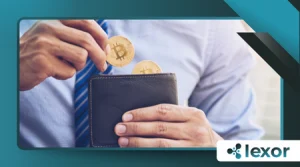How to Use a Crypto Wallet Safely and Effectively

Understanding how to use a crypto wallet safely is the cornerstone of financial sovereignty in the digital age.
With over 1.2 billion crypto users worldwide (Statista, 2025) and decentralized finance (DeFi) protocols handling $200 billion in assets, securing your holdings is no longer just best practice it’s survival.
Unlike traditional banking, where reversals and fraud protection exist, blockchain transactions are immutable.
One misstep a leaked private key, a malicious smart contract, or a convincing phishing attack can lead to irreversible losses.
But security doesn’t have to mean complexity. By adopting a structured approach, you can use a crypto wallet safely without sacrificing convenience.
This guide goes beyond generic advice, offering advanced strategies tailored for 2025’s threat landscape. From quantum-resistant encryption to AI-driven scams, we’ll explore real-world risks and defenses.
Why risk years of accumulation on preventable mistakes?
Understanding Crypto Wallet Security Fundamentals (to use a crypto wallet safely)
A crypto wallet is more than a keychain it’s your gateway to the blockchain. The first decision is choosing between hot (online) and cold (offline) storage.
Hot wallets like MetaMask and Phantom excel in accessibility, ideal for traders and DeFi users. Cold wallets, such as Ledger and Trezor, prioritize impenetrability, keeping keys offline where hackers can’t reach them.
Yet, even the most secure hardware wallet fails if mishandled. Consider the 2024 breach of a major exchange where users lost $40 million due to reused passwords.
This underscores a critical rule: to use a crypto wallet safely, never rely solely on a single security layer. Multisig (multi-signature) wallets, requiring approvals from multiple devices, mitigate this risk.
Institutions like Fidelity now mandate multisig for corporate crypto holdings, a practice retail investors should emulate.
Another often-overlooked factor is wallet firmware. Outdated software contains vulnerabilities. In 2023, a flaw in a popular wallet’s Bluetooth connectivity allowed remote exploits.
Regular updates are as crucial as locking your front door would you leave it open just because you’re “only gone for a minute”?
Mitigating Risks: To use a crypto wallet safely
Cybercriminals evolve faster than security patches. Last year, a new phishing tactic emerged: fake wallet update notifications embedded in genuine-looking emails.
Victims who clicked lost entire portfolios. To use a crypto wallet safely, treat every unsolicited message as hostile. Bookmark official wallet sites and never download updates from third-party links.
++Top Benefits of Smart Home Automation You Should Know
Social engineering has also grown sophisticated. A recent case involved hackers impersonating wallet support via deepfake video calls, tricking users into revealing seed phrases.
The solution? Never share recovery phrases legitimate support teams will never ask for them.
For added security, use passphrase wallets, which add a custom word to your seed, creating a hidden account even if the original phrase is compromised.
Physical threats matter too. A fireproof metal plate ($20-$50) preserves seed phrases from disasters, unlike paper that burns or ink that fades.
Cybersecurity Ventures reports that 65% of crypto losses stem from poor key storage—don’t be part of that statistic.
Balancing Convenience and Security

Daily transactions demand accessibility, but excessive exposure invites risk. A practical compromise?
The “tiered holdings” model. Store 90% of assets in cold storage, 9% in a dedicated hot wallet for DeFi, and 1% in a mobile wallet for instant spending.
This mirrors how you’d distribute cash: most in a bank, some in a home safe, and a little in your pocket.
Smart contract risks further complicate convenience. Connecting a wallet to a dApp often grants unlimited spending permissions a flaw exploited in the 2024 Uniswap LP token drain.
Read more: Bitcoin vs Ethereum: What’s the Real Difference?
Tools like Revoke.cash let you audit and revoke unnecessary approvals monthly. Think of it as cleaning unused app permissions on your phone; neglect it, and you’re inviting spies.
For frequent traders, air-gapped signing is a game-changer. Transactions are prepared on an online device but signed offline via QR codes, keeping keys isolated.
Services like Keystone Pro specialize in this, blending security with usability.
The Future of Wallet Protection
Decentralized identity (DID) solutions are revolutionizing wallet security.
Unstoppable Domains and ENS (Ethereum Name Service) replace complex addresses with readable names (e.g., “yourname.crypto”), reducing send-to errors.
Meanwhile, MPC (Multi-Party Computation) wallets split keys across multiple parties, eliminating single points of failure—a technique now adopted by Coinbase and Binance.
++How Smart Home Devices Are Making Our Lives Easier
Regulation is catching up. The EU’s MiCA law requires wallet providers to undergo penetration testing, raising industry standards. However, laws can’t replace personal vigilance.
As quantum computing advances, projects like QANplatform are pioneering post-quantum cryptography, future-proofing wallets against tomorrow’s threats.
To use a crypto wallet safely
Advanced Recovery Strategies
Losing access to a wallet doesn’t always mean theft sometimes, it’s forgetfulness.
Shamir’s Secret Sharing (SSS) splits seed phrases into multiple parts, requiring only a subset (e.g., 3-of-5) to recover funds. This balances redundancy with security, ensuring you won’t lose assets if one backup is lost.
Inheritance planning is equally vital. Services like Casa offer “inheritance kits,” allowing trusted contacts to reclaim assets after a verified death.
Without such measures, $10 billion in crypto could become permanently locked by 2030 (Cremation Institute, 2025).
Conclusion: to use a crypto wallet safely
Mastering how to use a crypto wallet safely is an ongoing journey, not a one-time setup. The 2025 landscape blends unprecedented opportunity with sophisticated threats.
From AI-powered social engineering to quantum decryption risks, the stakes have never been higher—or the defenses stronger.
By adopting multisig setups, air-gapped signing, and DID solutions, you transform from a passive holder into a proactive guardian of your wealth.
Remember: in crypto, security isn’t just about protecting money; it’s about preserving autonomy in a financial revolution. Are you prepared to be your own bank—responsibly?
Frequently Asked Questions
Q: Can a hardware wallet be hacked?
A: While no device is 100% unhackable, hardware wallets like Ledger and Trezor are designed to keep private keys offline, making remote attacks nearly impossible. Physical theft is a greater risk—always use a PIN and passphrase.
Q: How often should I check smart contract permissions?
A: Monthly audits are ideal. Unused approvals are low-hanging fruit for exploiters, as seen in the Poly Network exploit where $600 million was nearly stolen due to excessive permissions.
Q: Is it safe to use mobile wallets?
A: Yes, if properly secured. Avoid jailbroken phones, enable biometric locks, and never store seed phrases digitally. The 2024 Exodus wallet breach targeted users with screenshots of recovery phrases in their galleries.
Q: What’s the biggest mistake beginners make?
A: Reusing passwords across exchanges and wallets. A 2025 Chainalysis report found that 80% of stolen funds originated from credential stuffing attacks—unique passwords and 2FA could’ve prevented them.
Q: Are paper wallets still viable?
A: They’re obsolete. QR code scanners can be compromised, and physical damage is likely. Modern metal backups or encrypted digital storage (e.g., Cryptosteel) are superior alternatives.
Table: Wallet Security Comparison (2025)
| Feature | Hot Wallet | Cold Wallet |
|---|---|---|
| Accessibility | Instant transactions | Requires physical device |
| Risk Exposure | Vulnerable to malware | Nearly hack-proof |
| Best For | Daily trading, DeFi | Long-term storage |
| Recovery Complexity | Easy (if backed up) | Critical (no fallback) |
By integrating these insights, you’ll not only use a crypto wallet safely but also navigate the crypto ecosystem with unmatched confidence. The power of decentralization comes with responsibility embrace it wisely.
